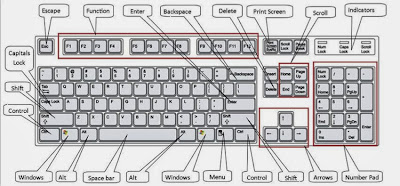
.jpg)
Many special characters can be created using keyboard shortcuts.
#All keyboard password#
Lock the computer, requiring password entry to access again.Īccess the Power User Tasks Menu in Windows 8 and Windows 10. Open the properties for the selected item (file, folder, shortcut, etc.). As the keyboard gets smaller, the number pad, home cluster, function row, arrows keys, and numbers are removed. There are other layouts too, some of the less common keyboard sizes are the 75, 65, and 40. Each size is unique with different features. Highlight from the current position to the end of the line. Almost all of them will have the necessary QWERTY design that we’ve all come to know and love: the letters are all in the same place there are shift, alt, delete, control, enter, caps lock, tab, and space keys. The most common keyboard sizes are Full-Sized (104 key), TKL (87 key), and 60 (68 key). Highlight from the current position to the beginning of the line. Open the find window for current document, web page, or window. View help information (F1 is used by almost every Windows program to display help).īookmark the current page in most Internet browsers.Ĭreate a new or blank document in some software, or open a new tab in most Internet browsers.Ĭhange the selected text to bold or remove bold.Ĭhange the selected text to italics or remove italics.Ĭhange selected text to underlined or remove underline. Open Edit options in the current program. Shortcut Keysįile menu options in the current program. You can enter these special characters by pressing the Shift key and the number key with the special character listed.
#All keyboard Pc#
We have a list of the most commonly shared ones in the basic PC shortcut keys section.īesides the special character shortcuts listed here, some are also on the number keys (below the F1 - F12 keys). As you memorize shortcut keys, you'll notice that many applications share them. In the image above, you can see that some standard features, such as Open ( Ctrl+ O) and Save ( Ctrl+ S), have shortcut keys assigned to them. Some programs require the user to press and hold Alt to see the underlined characters. For example, the file menu image has an underline on the "F" in File, which means you can press Alt and F to access the file menu. You can also find the shortcut keys in popular programs by looking for underlined letters in their menus. In other words, "Ctrl+S" tells you to press and hold Ctrl and then press S simultaneously.
#All keyboard plus#
The de facto standard for listing a shortcut is listing the modifier key, a plus symbol, and another key. Shortcut keys are performed using Alt (on IBM-compatible computers), Command (on Apple computers), Ctrl, or Shift in conjunction with another key. Shortcut keys help provide an easier and quicker method of navigating and executing commands in the computer software. NV Access' support webpage is available at PC shortcut keys for special characters.
#All keyboard full#
The full list of NVDA's keyboard commands can be found in the official NVDA User Guide. for dialogs)Īnnounce title of the current foreground window Next key you hit ignores NVDA and is a normal keystroke to navigate headings, landmarks, links, etc.) Other commands Task Browse mode allows you to navigate the page using standard screen reader shortcuts (e.g. * “Focus mode” allows you to enter data into form fields. Toggle between focus mode and browse mode To previous heading, landmark, table, focusable item, etc. Show list of all links, headings, form fields, buttons, and landmarks Start reading continuously from this point on This is useful for sighted users learning NVDA for testing purposes. Turn on Speech Viewer: Enabling Speech Viewer opens a window that shows everything NVDA states. NVDA automatically switches between Browse and Focus modes, but the user can toggle them using Insert + Space Bar. Browse and Focus Modesīrowse Mode: Browse mode is used when reading documents or web pages.įocus Mode: Focus mode is used when the user enters a form or other fields that require user input. Note also that these keyboard shortcuts are for NVDA's desktop keyboard layout setting some shortcuts are different when using NVDA's laptop keyboard layout setting. If you have changed your settings, you may need to substitute the Caps Lock key in the place of the Insert key. In the tables below, the assumption is that the Insert key is being used as the NVDA modifier key. By default, both the Numpad Insert key and the Extended Insert key are set as NVDA modifier keys, but users can designate the Caps Lock key as an additional NVDA modifier key. Note: Some keyboard shortcuts require using the NVDA modifier key. NVDA also has decent support for Internet Explorer, but the best testing combinations are NVDA + Firefox, NVDA + Chrome, and NVDA + Edge. NVDA works well with Firefox, Chrome, and Edge.


 0 kommentar(er)
0 kommentar(er)
